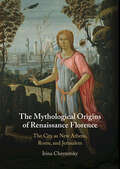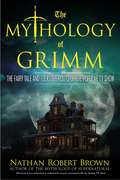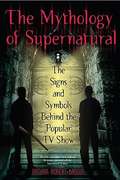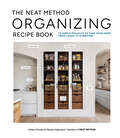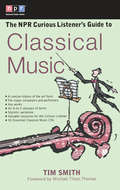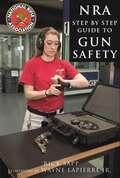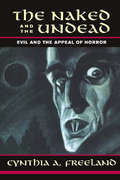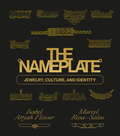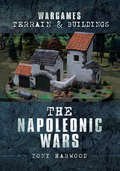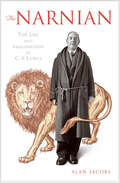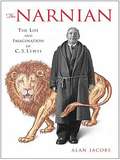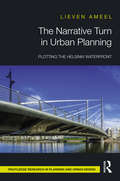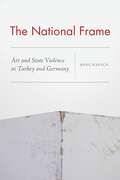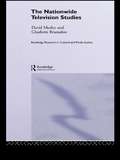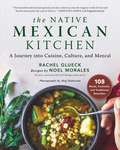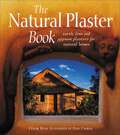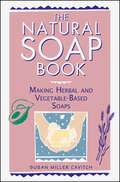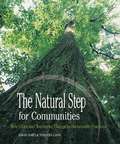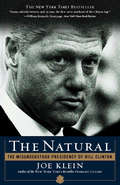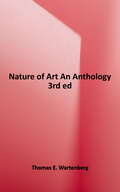- Table View
- List View
The Mythological Origins of Renaissance Florence: The City as New Athens, Rome, and Jerusalem
by Irina ChernetskyThe Mythology of Grimm
by Nathan Robert BrownGET INSIDE GRIMM. NBC's hit television series Grimm pits modern detective Nick Burkhardt of the Portland Police against a cast of terrifying villains--lifted directly from the pages of classic fairytales. In the world of the show, the classic stories are actually a document of real events, and Nick himself is descended from a long line of guardians, or Grimms, charged with defending humanity from the mythological creatures of the world. From The Big Bad Wolf to Sleeping Beauty, The Mythology of Grimm explores the history and folkloric traditions that come into play during Nick's incredible battles and investigations--tapping into elements of mythology that have captured our imaginations for centuries.
The Mythology of Supernatural
by Nathan Robert BrownA look into the paranormal legends and lore features on the hit television show Supernatural. From angels to demons, The Mythology of Supernatural explores the religious roots and the ancient folklore of the otherworldly entities that brothers Sam and Dean Winchester face on the hit television show Supernatural-and that have inhabited the shadows of human imagination across countless cultures and centuries.
The NEAT Method Organizing Recipe Book: 70 Simple Projects to Take Your Home from Chaos to Composed
by Ashley Murphy Marissa Hagmeyer"A master class in functional style" (Billy Cotton), by the founders of NEAT Method In this one-of-a-kind organizing book, the projects are as simple as recipes, with &“ingredient&” lists and clear step-by-step directions. There are smart, stylish solutions for every room in the house, including quick wins that can be accomplished in just twenty minutes as well as larger overhauls that may take an hour or more, including: A &“drop zone&” for dirty shoes and sports gear at the garage door Compartmentalized drawers for everything from kitchen utensils to makeup to socks A color-coded bedroom closet A playroom kids will actually keep tidy And much more! The end result is transformative: By implementing solutions that emphasize beauty as much as function, you&’ll create a home that&’s well arranged, a true place of calm and simplicity.
The NES Encyclopedia: Every Game Released for the Nintendo Entertainment System
by Chris ScullionA comprehensive, colorful guide to every game ever released on the classic Nintendo Entertainment System. One of the most iconic video game systems, the NES is credited with saving the American video games industry in the early 1980s. The NES Encyclopedia is the first ever complete reference guide to every game released on the Nintendo Entertainment System, Nintendo&’s first industry-defining video game system. As well as covering all 714 officially licensed NES games, the book also includes more than 160 unlicensed games released during its lifespan, giving for the first time a definitive history of this important console's full library. Written by a retro gaming expert with 30 years of gaming experience and a penchant for bad jokes, TheNES Encyclopedia promises to be both informative and entertaining. The NES continues to enjoy a strong cult following among Nintendo fans and gamers in general with wide varieties of officially licensed merchandise proving ever popular. Nintendo&’s most recent console, the Switch, is the fastest selling video game console of all time in the United States and Japan. Nintendo launched a variety of classic NES games for download on the system, meaning a new audience of gamers is due to discover the NES for the first time if they have not already. Praise for The NES Encyclopedia &“As a catalog of all 876 NES games, this work is unique in its breadth of coverage and will be of great interest to old-school video gamers and collectors.&” —Booklist &“A definitive resource that is more than worthy of the title &‘Encyclopedia.&’ &” —Nintendo World Report
The NPR Curious Listener's Guide to Classical Music
by Tim Smith Michael Tilson ThomasFor the beginner or the devotee--it's everything the classical music buff needs to know. The major composers from Bach and Bartok to Rachmaninoff and Tchaikovsky Significant performers from Maurice Andre and Leornard Bernstein to Georg Solti and Yo Yo Ma The landmark works from Appalachian Spring to Don Juan A concise history of classical music A deconstruction of the art form The language of classical music Valuable resources for the Curious Listener
The NRA Step-by-Step Guide to Gun Safety: How to Care For, Use, and Store Your Firearms
by Rick Sapp National Rifle AssociationHaving shaped our nation since its birth, guns are an integral part of American life. As more and more Americans choose to own firearms, it becomes increasingly important to educate them on proper shooting and handling techniques.Drawing on the National Rifle Association’s more than two centuries of shooting experience, as well as the collected knowledge of more than 55,000 certified instructors, The NRA Step-by-Step Guide to Gun Safety offers key-and life-saving-advice on using, caring for, and storing handguns, rifles, and shotguns. Packed with essential information and resources, including details on how propellants burn in cartridges, shooting etiquette on and off the range, and where to find a certified NRA shooting instructor, The NRA Step-by-Step Guide to Gun Safety will help reinforce the importance of safe gun-handling habits. Included is information on: The safest and most effective way to store and transport pistols, rifles, and shotgunsThe anatomy of the many kinds of guns availableThe proper way to reload any firearmThe best way to clean your gunProper use of eye and ear protectionThe correct clothing to wear while huntingWhether you are an experienced shooter or haven’t shot a round in your life, The NRA Step-by-Step Guide to Gun Safety will provide new and enlightening information that will make you, and your family, safer gun owners.Skyhorse Publishing is proud to publish a broad range of books for hunters and firearms enthusiasts. We publish books about shotguns, rifles, handguns, target shooting, gun collecting, self-defense, archery, ammunition, knives, gunsmithing, gun repair, and wilderness survival. We publish books on deer hunting, big game hunting, small game hunting, wing shooting, turkey hunting, deer stands, duck blinds, bowhunting, wing shooting, hunting dogs, and more. While not every title we publish becomes a New York Times bestseller or a national bestseller, we are committed to publishing books on subjects that are sometimes overlooked by other publishers and to authors whose work might not otherwise find a home.
The Naked And The Undead
by Cynthia FreelandHorror is often dismissed as mass art or lowbrow entertainment that produces only short-term thrills. Horror films can be bloody, gory, and disturbing, so some people argue that they have bad moral effects, inciting viewers to imitate cinematic violence or desensitizing them to atrocities. In The Naked and the Undead: Evil and the Appeal of Horror, Cynthia A. Freeland seeks to counter both aesthetic disdain and moral condemnation by focusing on a select body of important and revealing films, demonstrating how the genre is capable of deep philosophical reflection about the existence and nature of evil-both human and cosmic. In exploring these films, the author argues against a purely psychoanalytic approach and opts for both feminist and philosophical understandings. She looks at what it is in these movies that serves to elicit specific reactions in viewers and why such responses as fear and disgust are ultimately pleasurable. The author is particularly interested in showing how gender figures into screen presentations of evil.The book is divided into three sections: Mad Scientists and Monstrous Mothers, which looks into the implications of male, rationalistic, scientific technology gone awry; The Vampire's Seduction, which explores the attraction of evil and the human ability (or inability) to distinguish active from passive, subject from object, and virtue from vice; and Sublime Spectacles of Disaster, which examines the human fascination with horror spectacle. This section concludes with a chapter on graphic horror films like The Texas Chainsaw Massacre. Written for both students and film enthusiasts, the book examines a wide array of films including: The Silence of the Lambs, Repulsion, Frankenstein, The Fly, Dead Ringers, Alien, Bram Stoker's Dracula, Interview with the Vampire, Frenzy, The Shining, Eraserhead, Hellraiser, and many others.
The Nameplate: Jewelry, Culture, and Identity
by Marcel Rosa-Salas Isabel Attyah FlowerA vibrant photographic celebration of nameplate jewelry featuring deeply personal stories and rich cultural contexts, collected by the creators of the Documenting the Nameplate project.&“Names don&’t just tell stories. They are stories.&”—Rawiya KameirNameplate jewelry comes in many shapes, styles, and sizes—from simple scripted pendants to bejeweled rings, belts, and bracelets with a first, last, and/or nickname. Like so many individuals who proudly wear nameplates, Marcel Rosa-Salas and Isabel Attyah Flower were first introduced to this storied jewelry during childhood. Their love of the style gradually blossomed into a wide-reaching research project, Documenting the Nameplate, through which they&’ve spent years collecting photographs and testimonials from nameplate-wearers across the country and world. Featuring essays and interviews from scholars and cultural figures, portraits by contemporary photographers, archival imagery, and a historical exploration into the multifaceted and often overlooked significance of nameplate jewelry, The Nameplate is a tribute to the people who make, wear, and cherish it.
The Napoleonic Wars (Wargames Terrain and Buildings)
by Tony Harwood&“Create good looking buildings and terrain for your gaming table,&” including a stone well, a Russian windmill, and a Peninsular diorama (Wargames and Railroads). Any miniature wargame is greatly enhanced by realistic and evocative scenery and buildings, but commercial ready-made pieces can be expensive. Building your own can be a cost-effective and very rewarding alternative, another hobby in itself, but it can be hard to know where to start. Wargames Terrain and Buildings is a series of books aimed at giving wargamers the skills, techniques and guidance they need to create their own stunning and practical model buildings. In this volume, master modeler Tony Hardwood shares his years of experience and presents the reader with a wide range of projects for the Napoleonic era. With the aid of step-by-step photographs, he guides the reader through building and finishing each of these models, which are organized in three sections of increasing complexity and encompass a range of scales and different materials. Nine projects are included but the techniques and skills demonstrated along the way, along with valuable advice on tools, construction materials and paints, can be adapted and applied to a much wider range of structures to grace your battlefields. &“This book is marvelous in so many ways. The construction of the example buildings and other structures is described step-by-step with clear photographs of each . . . The construction process is straightforward and includes some great combinations of techniques that make so much sense.&” —The Chauvinistic Blog &“[A] little masterpiece . . . All in all, a superb book.&” —Vintage Airfix
The Narnian: The Life and Imagination of C. S. Lewis
by Alan JacobsThe White Witch, Aslan, fauns and talking beasts, centaurs and epic battles between good and evil -- all these have become a part of our collective imagination through the classic volumes of The Chronicles of Narnia. Over the past half century, children everywhere have escaped into this world and delighted in its wonders and enchantments. Yet what we do know of the man who created Narnia? This biography sheds new light on the making of the original Narnian, C. S. Lewis himself.Lewis was one of the intellectual giants of the twentieth century and arguably the most influential religious writer of his day. An Oxford don and scholar of medieval literature, he loved to debate philosophy at his local pub, and his wartime broadcasts on the basics of Christian belief made him a celebrity in his native Britain. Yet one of the most intriguing aspects of Clive Staples Lewis remains a mystery. How did this middle-aged Irish bachelor turn to the writing of stories for children -- stories that would become among the most popular and beloved ever written?Alan Jacobs masterfully tells the story of the original Narnian. From Lewis's childhood days in Ireland playing with his brother, Warnie, to his horrific experiences in the trenches during World War I, to his friendship with J. R. R. Tolkien (and other members of the "Inklings"), and his remarkable late-life marriage to Joy Davidman, Jacobs traces the events and people that shaped Lewis's philosophy, theology, and fiction. The result is much more than a conventional biography of Lewis: Jacobs tells the story of a profound and extraordinary imagination. For those who grew up with Narnia, or for those just discovering it, The Narnian tells a remarkable tale of a man who knew great loss and great delight, but who knew above all that the world holds far more richness and meaning than the average eye can see.
The Narnian: The Life and Imagination of C. S. Lewis
by Alan JacobsonBiography of Lewis and an analysis of his writings.
The Narrative Turn in Urban Planning: Plotting the Helsinki Waterfront
by Lieven AmeelNarratives, in the context of urban planning, matter profoundly. Planning theory and practice have taken an increasing interest in the role and power of narrative, and yet there is no comprehensive study of how narrative, and concepts from narrative and literary theory more broadly, can enrich planning and policy. The Narrative Turn in Urban Planning addresses this gap by defining key concepts such as story, narrative, and plot against a planning backdrop, and by drawing up a functional typology of different planning narratives. In two extended case studies from the planning of the Helsinki waterfront, it applies the narrative concepts and theories to a broad range of texts and practices, considering ways toward a more conscious and contextualized future urban planning. Questioning what is meant when we speak of narratives in urban planning, and what typologies we can draw up, it presents a threefold taxonomy of narratives within a planning framework. This book will serve as an important reference text for upper-level students and researchers interested in urban planning.
The Nation's Stage: The John F. Kennedy Center for the Performing Arts
by Michael Kaiser Michael Dolan David M. Rubenstein"There is a connection, hard to explain logically but easy to feel, between achievement in public life and progress in the arts. The age of Pericles was also the age of Phidias. The age of Lorenzo de Medici was also the age of Leonardo da Vinci. The age of Elizabeth was also the age of Shakespeare, and the new frontier for which I campaign in public life can also be a new frontier for American art." --John F. Kennedy When the John F. Kennedy Center for the Performing Arts opened in our nation's capital on September 8, 1971, its mission was to be the "national center for the performing arts." Forty years later the Center has succeeded in that mission and continues to celebrate it--countless times over--in every state and country around the world, and in the hearts and minds of millions of audience members, performers, and artists. In The Nation's Stage, that history comes alive through a stirring historical and pictorial narrative. An incubator and springboard for some of the most memorable and important theater, dance, opera, and musical productions of the past four decades, the Center has hosted plays by Tennessee Williams, Arthur Miller, Tom Stoppard, and August Wilson, as well as theater for young people with Debbie Allen; dance by Antony Tudor, Agnes de Mille, Mark Morris, and Jerome Robbins; orchestral scores by Leonard Bernstein, Aaron Copland, Dmitri Shostakovich, and John Cage; and breathtaking performances from the world's most notable actors, musicians, and dancers. Every year, millions of Americans and people from around the globe gather at the Center to enjoy the arts. This book, an introduction to the Center's accomplishments and abilities and a commemorative artifact for those who have enjoyed those gifts over the years, is a historical narrative with hundreds of colorful archival photos that allow past audiences to relive the most magical moments at the Center. Those who've never been inside receive a backstage pass to all the glamour and wonder this national treasure has to offer.
The National Frame: Art and State Violence in Turkey and Germany
by Banu KaracaBased on long-term ethnographic research in the art worlds of Istanbul and Berlin, The National Frame rethinks the politics of art by focusing on the role of art in state governance. It argues that artistic practices, arts patronage and sponsorship, collecting and curating art, and the modalities of censorship continue to be refracted through the conceptual lens of the nation-state, despite the globalization of the arts. By examining discussions of the civilizing function of art in Turkey and Germany and particularly moments in which art is seen to cede this function, The National Frame reveals the histories of violence on which the production, circulation, and, very understanding of art are predicated. Karaca examines this darker side of art in two cities in which art and its institutions have been intertwined with symbolic and material dispossession. The particularities of German and Turkish contexts, both marked by attempts to claim modern nationhood through the arts; illuminate how art is staked to memory and erasure, resistance and restoration; and why art has been at once vital and unwieldy for national projects. As art continues to be called upon to engage the past and imagine different futures, The National Frame explores how to reclaim art’s emancipatory potential.
The Nationwide Television Studies (Routledge Research in Cultural and Media Studies)
by David Morley Charlotte BrunsdonThis book brings together for the first time David Morley and Charlotte Brunsdon's classic texts, Everyday Television: Nationwide and The Nationwide Audience. Originally published in 1978 and 1980 these two research projects combine innovative textual readings and audience analysis of the BBC's current affairs programme Nationwide. In a specially written introduction the authors trace the history of the original Nationwide project and clarify the origins of the two books.
The Native Mexican Kitchen: A Journey into Cuisine, Culture, and Mezcal
by Rachel Glueck Noel MoralesA Deep Dive into the Complex and Vibrant Native Culture that is the Bedrock of Mexican Cuisine, with Over One Hundred Recipes, Including Moles, Pozoles, Chiles en Nogada, and More Mexican cuisine is ubiquitous in the American dining scene, yet it remains far removed from its roots. The Native Mexican Kitchen is an homage to the indigenous peoples and their culinary and cultural traditions that create Mexican cuisine, elevating it beyond Americanized tacos and tequila. With recipes by Mexican chef Noel Morales—born of Aztec and Omec blood, grandson to a mezcalero, and raised by native dancers—The Native Mexican Kitchen offers its readers the ability to recreate the flavors of centuries-old dishes in a modern kitchen. Morales shares well-known plates such as birria and barbacoa, and beloved market foods like tlayudas and tacos al pastor, as well as a few of his own vegetarian and seafood creations. Signature mezcal cocktails and decadent desserts adorn these pages, while the Medicinales section includes teas, tinctures, and baths of traditionally used herbs for a variety of ailments, such as colds, muscle tension, and infertility. Author Rachel Glueck provides rare access and insight into a Mexico that few foreigners or nationals see today, leading you through indigenous festivals with masked dancers, bountiful market places, and sacred pilgrimage sites. Unwrap the philosophies and customs of Mexico&’s native communities and discover the depth of this magical country and how you can welcome it into your own kitchen. Personal stories of mezcaleros, traditional cooks, and native healers are accentuated by 130 stunning photographs and are woven through with mouth-watering recipes. With pages bursting with color, culture, and wisdom, you&’ll discover a Mexico you never knew existed.
The Natural & Handmade Soap Book: 20 Delightful and Delicate Soap Recipes for Bath, Kids and Home
by Sarah Harper&“The natural products you can make from this book are not only kinder to your skin; they are also better for the planet&” (Soap Making Magazine, &“Top 6 Books for Soap Making&”). From nourishing oat soap bars to impressive rosebud soap cakes and fun soaps for kids, this book will inspire you to make beautiful handmade soap without all the chemicals found in commercial products. Sarah shows you how to master the two key techniques of handmade soapmaking—the traditional cold-process method and the fast and fun melt-and-pour method—and then demonstrates how to use these techniques to make fabulous soaps, shampoo bars, homemade washing powder, and even dishwasher soap bombs. Step-by-step photography and the author&’s insightful advice from years of experience teaching soapmaking makes every project achievable, guiding you effortlessly from start to finish. Packed with handy tips and an easy, approachable style, this is a beautiful book filled with practical projects so that anyone, including children, can make a variety of soaps they will be proud to use, display, and give away! &“This book shows that making soap is not just about the science, but can be another kind of art as it allows makers to bring out their creativity in the process.&” —Bangkok Post &“A fabulous book for anyone interested in all things soap.&” —Sustainable(ish)
The Natural Plaster Book: Earth, Lime and Gypsum Plasters for Natural Homes
by Dan Chiras Cedar Rose GuelberthFor builders of natural homes (straw bale, cob, adobe, rammed earth, and other natural materials), this unique step-by-step guide takes the confusion out of choosing, mixing, and applying natural plasters.From principles to practicalities, and with every stage of the process illustrated, The Natural Plasters Book details the entire process of plastering with earth, lime, and gypsum for a long-lasting and durable finish. Starting with an overview and history of the natural building movement, the book handles a wide variety of topics including earthen plaster versus cement stucco, tools and techniques of the trade, plaster recipes, and pigmenting plaster or painting walls with natural paints. First-time builders will appreciate tips on common mistakes (and how to avoid them) discussed at each stage of the plastering process. Special focus is paid to the importance of planning and designing for earthen plasters- before building begins.The only comprehensive guide available on natural plasters, this book is written for the growing number of people who have decided to build their own natural homes as well as for professionals. Heavily illustrated with practical drawings and photographs, it also includes an extensive resource guide listing books, magazines, videos, builders, and suppliers.
The Natural Soap Book: Making Herbal and Vegetable-Based Soaps
by Susan Miller CavitchMaking your own soap is fun, easy, and rewarding. In this introductory guide, Susan Miller Cavitch shows you how to craft your own all-natural, wonderfully smelling soaps. Illustrated directions take you through the whole process, from buying supplies to cutting the final bars. With easy-to-follow recipes that range from classics like oatmeal and honey soap to more adventurous combinations using goat milk and borage, you’ll be inspired to make uniquely personal soaps that are gentle on your skin and a pleasure for your nose.
The Natural Soap Chef: Making Luxurious Delights from Cucumber Melon and Almond Cookie to Chai Tea and Espresso Forte
by Heidi Corley BartoCreate natural, moisturizing, aromatic soaps at home that are easy to make, inexpensive, and a joy to use. Soap is supposed to cleanse and soothe skin, but what&’s available in stores often just dries and irritates. With The Natural Soap Chef anyone can quickly learn how to make all-natural soaps that gently wash even the most sensitive skin. Not only are these soaps good for the body, but they also beautifully dress up any home with their delicious scents and colors. This book will show you the way your great grandma made soap, by using the cold process method utilizing the basic components of soap: lye and oil. With easy-to-follow instructions and photos that guarantee success, you&’ll be a soap-making expert in no time! Prepare to take wonderful ingredients and turn them into amazing soaps like: • Rosemary Olive Oil Soap • Pink Grapefruit Soap • Lemon Verbena Soap • Chocolate Soufflé Soap • Chai Tea Soap • Baby Rose Soap • Guinness Stout Soap • Espresso Forte Soap • Cut Grass Soap • Head-to-Toe Shampoo Bar • Cucumber Melon Soap • Pumpkin Spice Soap
The Natural Soap Making Book for Beginners: Do-It-Yourself Soaps Using All-Natural Herbs, Spices, and Essential Oils
by Kelly CableUnleash your creativity by making your own all-natural soapMaking soap with all-natural ingredients lets you express your creative side while reducing chemicals in your cleansing routine, but where do you begin? This helpful resource for entry-level soap makers will demystify the process and show you how to bring nature and your own unique style into your everyday soaps.What sets The Natural Soapmaking Book for Beginners apart from other soap making books:Soap making basics—Learn all you need to know before making your first batch of soap, like the science behind what happens when you combine ingredients, helpful soap making terminology, and lists of all the supplies you'll need (including lye). This section also provides instructions for using natural colors and scents to make your soaps look and smell beautiful.Step-by-step tutorials—Dive into cold-process soap making and unlock your artistic abilities using simple guides for mixing, melting, and pouring, as well as instructions for creating silky smooth, layered, and embossed soaps.55+ all-natural soap recipes—This book will teach you to make a variety of soaps infused with natural herbs, oils, and milks, including a creamy Gentle Baby Soap, an antioxidant-rich Avocado and Shea Face Bar with Aloe, and a nourishing Goat Milk and Honey Shampoo Bar.Master the basic techniques you need to create luxurious soap and body care products with The Natural Soapmaking Book for Beginners.
The Natural Step for Communities
by Sarah James Torbjörn LahtiSustainability may seem like one more buzzword and cities and towns like the last places to change, but The Natural Step for Communities provides inspiring examples of communities that have made dramatic changes toward sustainability and explains how others can emulate their success.Chronicled in the book are towns like Övertorneå, whose government operations recently became 100 percent fossil fuel-free, demonstrating that unsustainable municipal practices really can be overhauled. Arguing that the process of introducing change--whether converting to renewable energy or designing compact development--is critical to success, the authors outline why well-intentioned proposals often fail to win community approval and why an integrated approach--not "single-issue" initiatives--can surmount challenges of conflicting priorities, scarce resources and turf battles.The book first clarifies the concept of sustainability, offering guiding principles--the Natural Step framework--that help identify sustainable action in any area. It then introduces the 60+ eco-municipalities of Sweden that have adopted changes to sustainable practices throughout municipal policies and operations. The third section explains how they did it and outlines how other communities in North America and elsewhere can do the same. Key to success is a democratic, "bottom-up" change process and clear guiding sustainability principles, such as the Natural Step framework.The book will appeal to both general readers wishing to understand better what sustainability means and practitioners interested in introducing or expanding sustainable development in their communities.Sarah James is the principal of a community planning consulting firm. She co-authored the American Planning Association's Planning for Sustainability Policy Guide and has published articles throughout the U.S. on this subject.Torbjörn Lahti was the planner for Sweden's first eco-municipality and is directing a five-year sustainable community demonstration project. He was instrumental in forming the Swedish National Association of Eco-municipalities.
The Natural: The Misunderstood Presidency of Bill Clinton
by Joe KleinNovelist and political analyst Klein argues that for all the scandal and political disappointments, Clinton's two terms in office quietly made good times a little better and left no huge mess for the next tenant to clean up. Annotation c. Book News, Inc. , Portland, OR (booknews. com)
The Nature of Art: An Anthology
by Thomas E. WartenbergWhat is art? This book explores that question and shows you how it has been answered over the years by both Western and non-Western thinkers. You will not only read selections from these great writers but you will also get study questions that draw your attention to the key points you just read. Hailed by reviewers and adopters for its clarity and rigor, the book offers a lively and engaging introduction to the philosophy of art.
